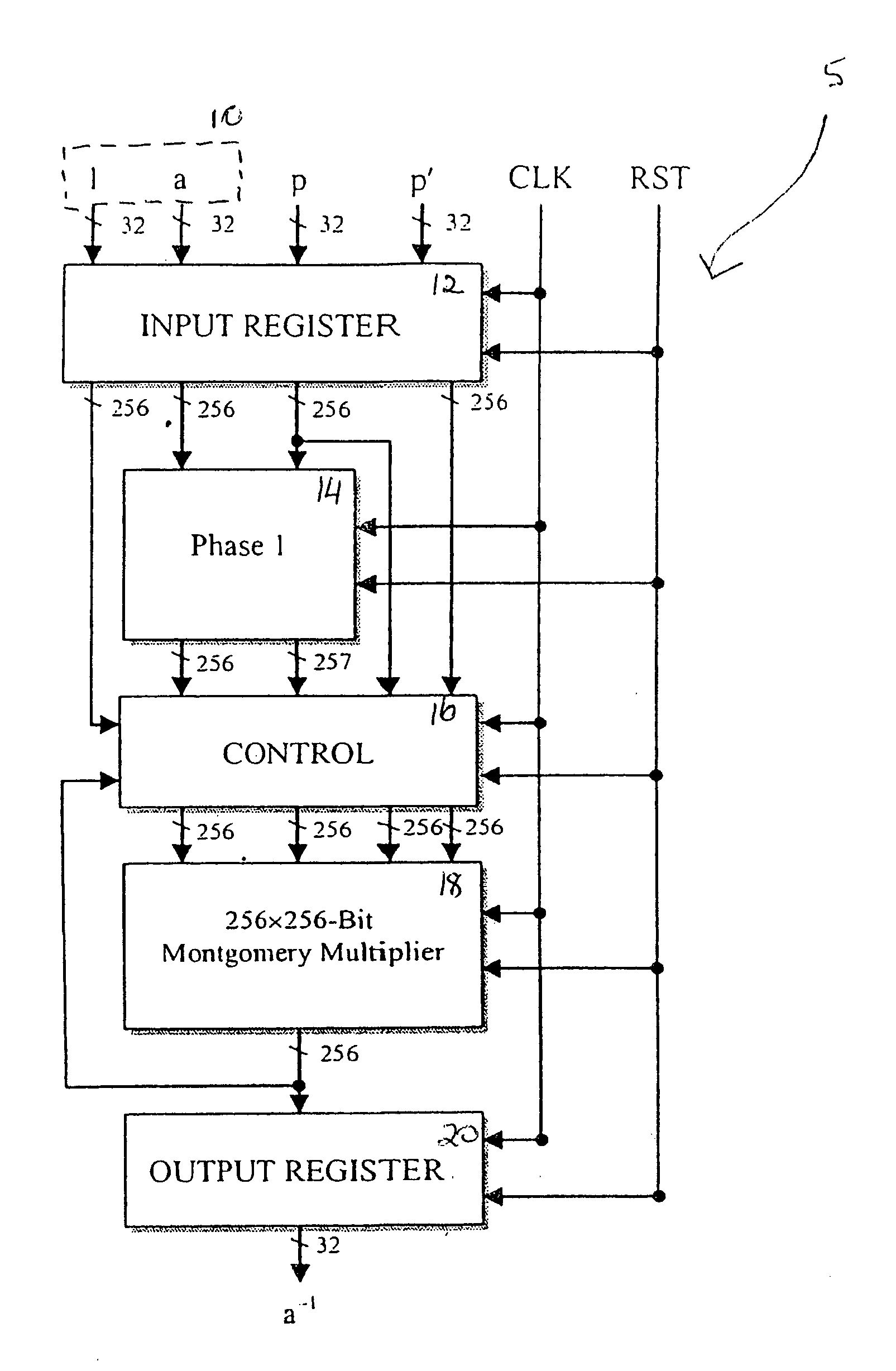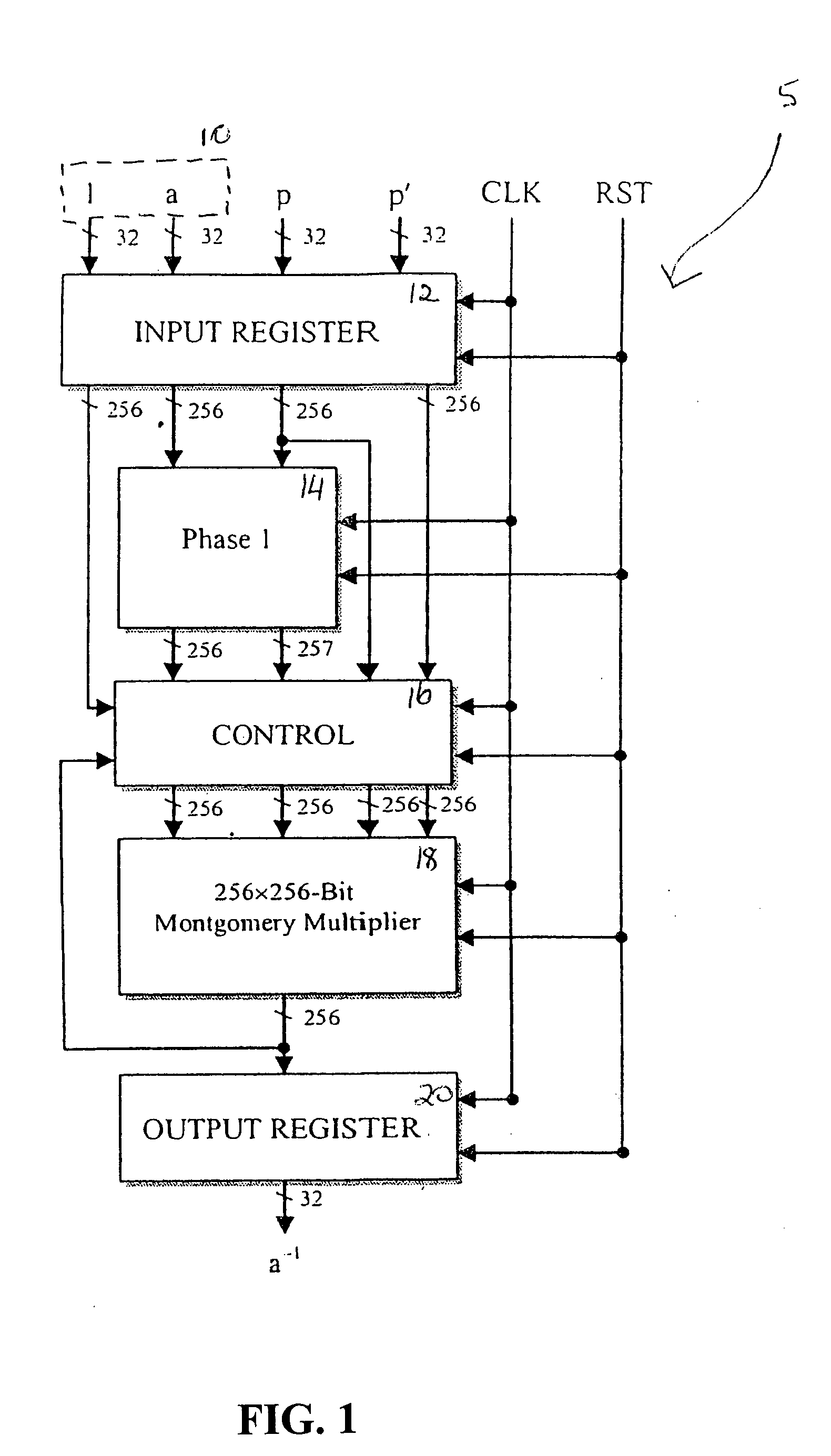Method and apparatus for calculating a modular inverse
a modular inverse and modular technology, applied in the field of modular inverse methods and apparatus, can solve the problems of slow calculation of modular inverse of a large number, feature is becoming increasingly problematic, and high-speed, low-cost and robust cryptographic products, so as to reduce the number of such multiplication operations and reduce the silicon usage of hardware implementations.
- Summary
- Abstract
- Description
- Claims
- Application Information
AI Technical Summary
Problems solved by technology
Method used
Image
Examples
Embodiment Construction
[0086] Reference will now be made in detail to the preferred embodiment of the present invention, example of which is illustrated in the accompanying drawings and the following tables: [0087] Table 5 lists input and output variables employed in the method according to the first aspect; [0088] Table 6 comprises pseudo-code that outlines the steps involved in implementing the method according to the first aspect; [0089] Table 7 comprises pseudo-code that outlines the steps involved in performing a Phase1 calculation in the implementation shown in Table 6; [0090] Table 8 comprises pseudo-code that outlines the steps involved in performing a Montgomery multiplication operation in the implementation shown in Table 6; and
[0091] Table 9 lists the results of the comparative analysis of the performance of the hardware implementations of the method according to the first aspect and the conventional Kaliski and Savas and Koç algorithms.
TABLE 5Classical ModularMontgomery ModularInverse Calcu...
PUM
 Login to View More
Login to View More Abstract
Description
Claims
Application Information
 Login to View More
Login to View More - R&D
- Intellectual Property
- Life Sciences
- Materials
- Tech Scout
- Unparalleled Data Quality
- Higher Quality Content
- 60% Fewer Hallucinations
Browse by: Latest US Patents, China's latest patents, Technical Efficacy Thesaurus, Application Domain, Technology Topic, Popular Technical Reports.
© 2025 PatSnap. All rights reserved.Legal|Privacy policy|Modern Slavery Act Transparency Statement|Sitemap|About US| Contact US: help@patsnap.com



